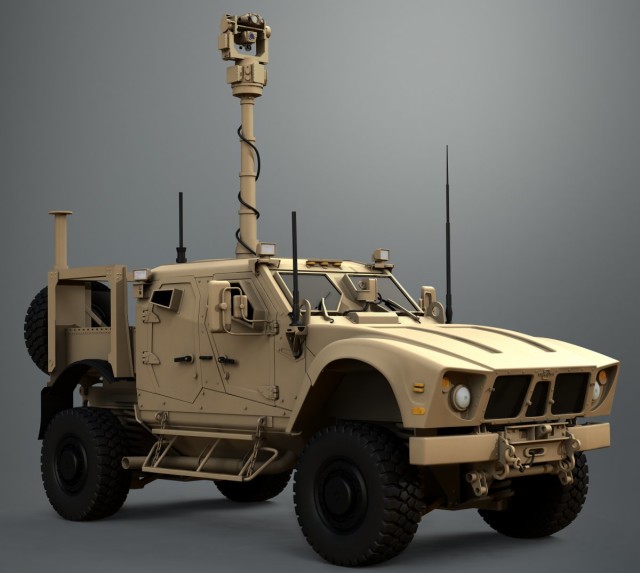At the US Army Maneuver-Fires Integrated Experiment (MFIX) held at Fort Sill, Oklahoma, Northrop Grumman Corporation’s Venom demonstrated the ability to identify and track small unmanned aerial systems (UAS) and to provide accurate targeting data while on the move. This targeting capability enabled other systems in the network to counter the UAS.
Venom is a ground-based targeting system that incorporates Northrop Grumman’s battle-tested Lightweight Laser Designator Rangefinder (LLDR) on a universal, stabilized and gimbaled mount. The system can be used to provide target designation for delivery of precision-guided munitions.
As unmanned systems become more prevalent, land forces will require the ability to track and defeat this growing threat. At MFIX, Northrop Grumman’s Venom system supported counter-UAS functions from two vehicles, providing precision target coordinates for fire support. The system received slew-to-cue messages and locked onto and tracked low-flying, small unmanned aircraft. Because it uses a vehicle-agnostic design, Venom is ready to protect a wide range of platforms from the UAS threat.
Venom also demonstrated precision targeting on-the-move capabilities as a mounted sensor controlled under armor. This important capability provides an additional layer of protection for troops while on maneuver.
“By continuing to invest in Venom, we have been able to repurpose our mature LLDR technology for additional missions,” said Kay Burch, vice president, communications, intelligence and networking solutions, Northrop Grumman. “Adding counter-UAS and on-the-move targeting will give our warfighters greater flexibility in mission planning and execution.”
The LLDR, the core of the Venom system, provides a unique capability to forward observers, forward air controllers and naval gunfire spot teams. The system can recognize targets in day/night/obscurant conditions, determine range to the target at an eye safe wavelength and calculate grid coordinates with its own GPS/Elevation/Azimuth capability. More than 2,700 LLDR systems have been delivered.
Source: Press Release

